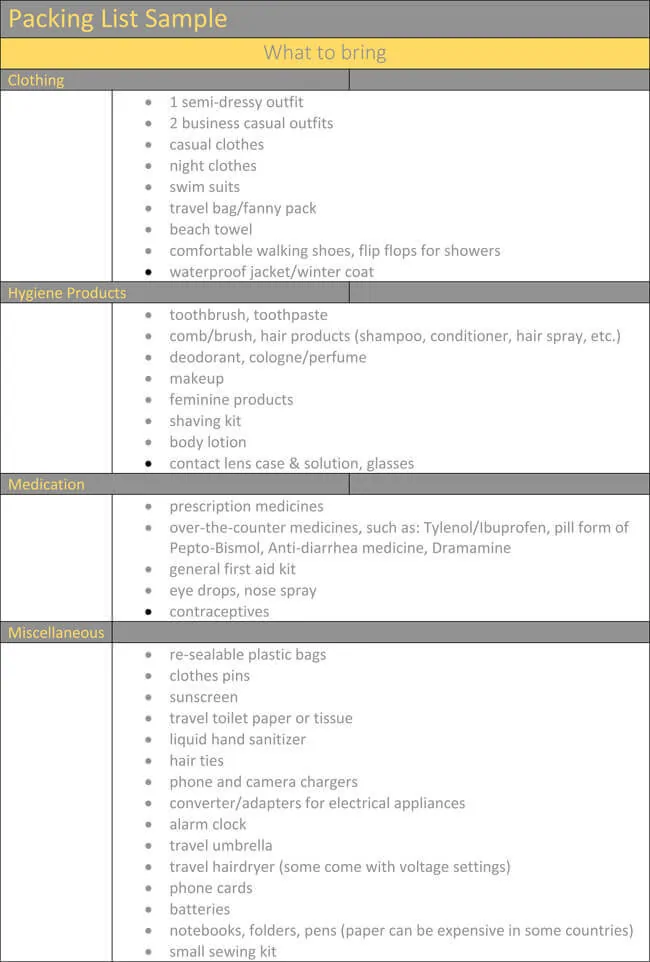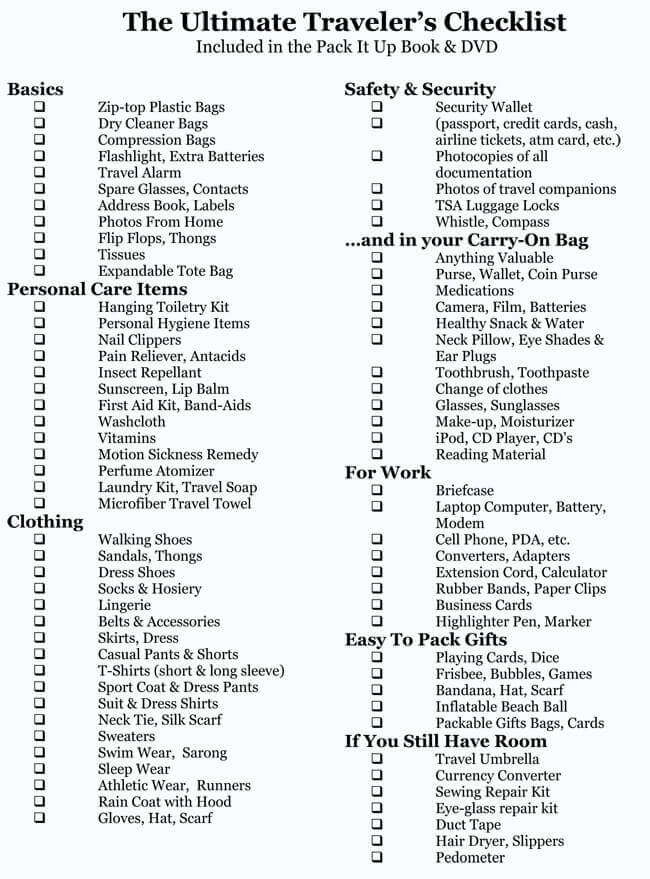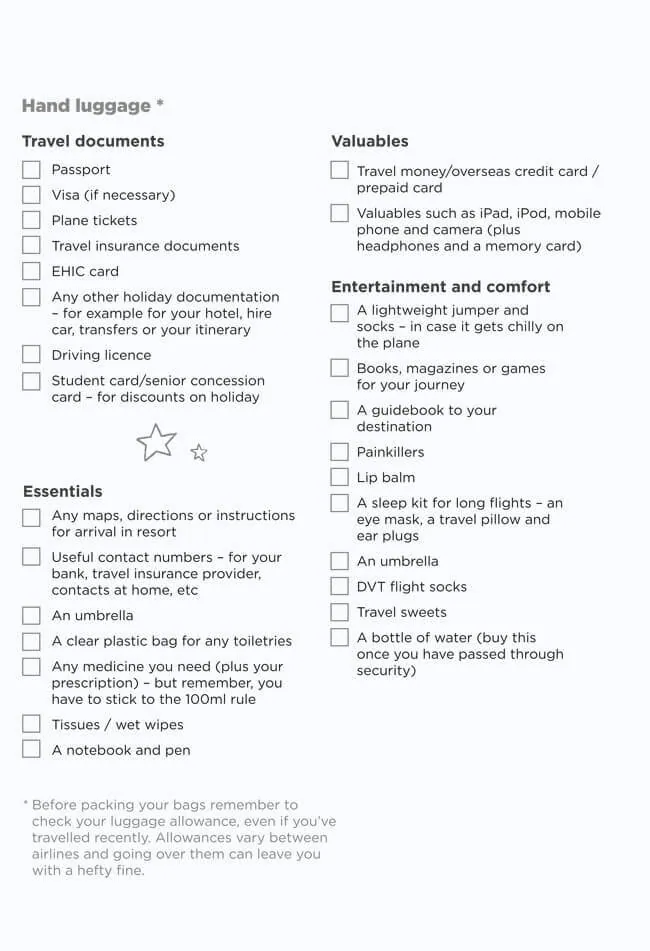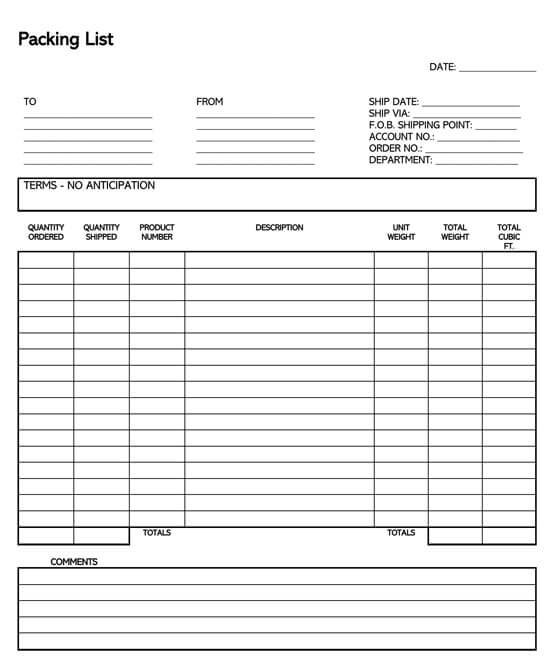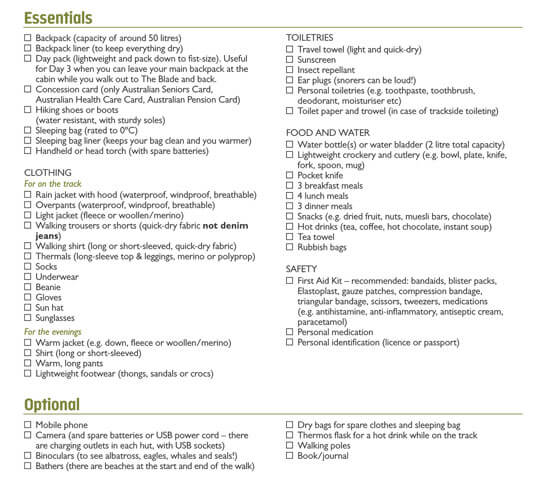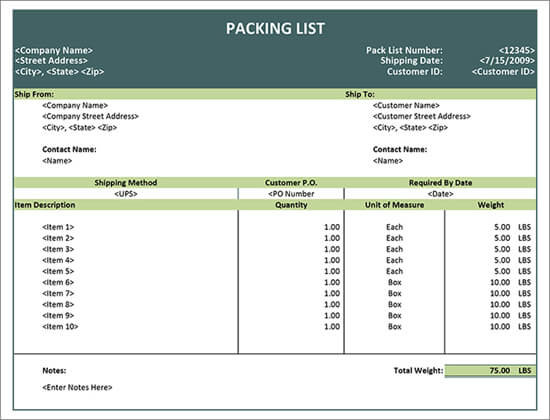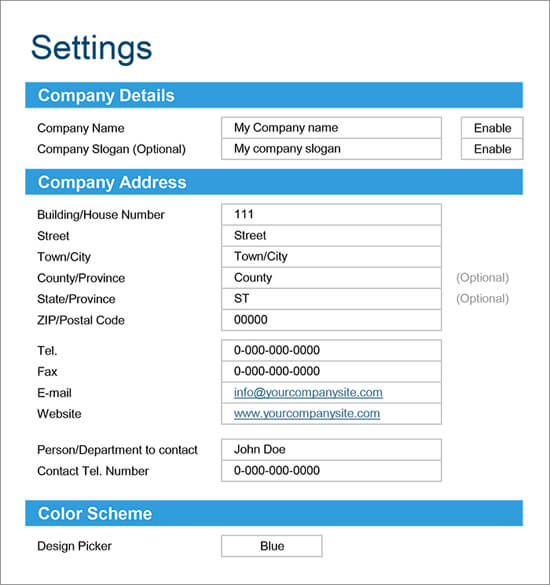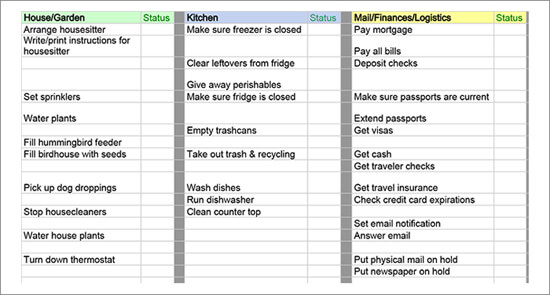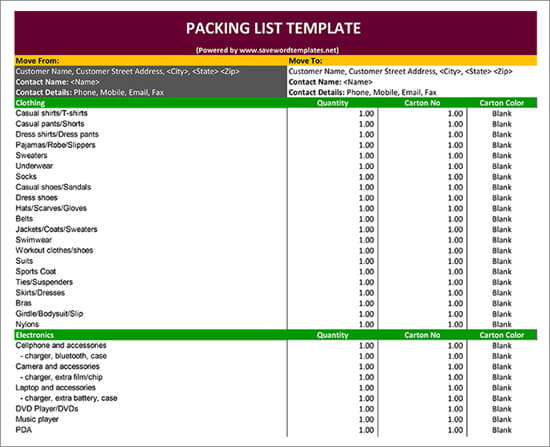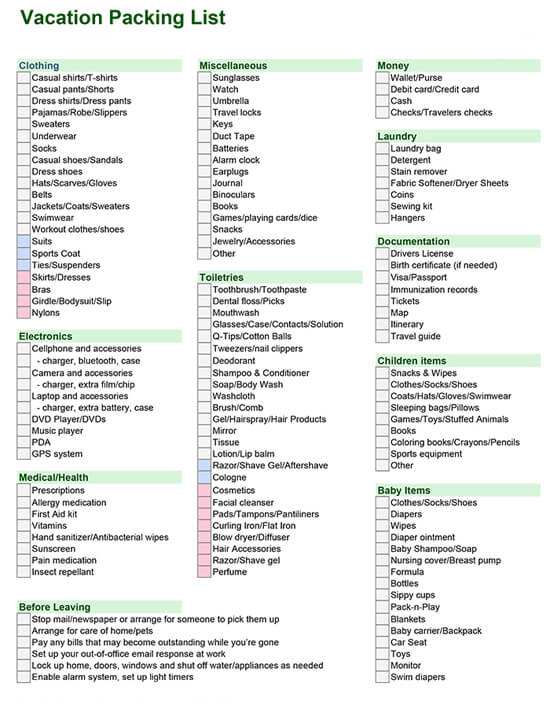The journey towards searching for a new and perfect resident can be daunting. After the long and careful search, you’ve finally found a new dwelling place. For many, the feeling will always be overwhelming. Now, you need to figure out how to pack and move your belongings before you settle in the new house. When packing, it’s important that you pack correctly to make them survive the relocation while still intact. Also, packing helps the homeowner avoid any breakages, especially when handling fragile items. For this reason, it’s recommended that you create a packing list that will help you shift your belongings efficiently and with no much hassle.
Free House Move Packing List Templates
Creating Your Own Packing List
Packing household items is not only time consuming but also laborious. However, with proper guidelines, the work can be made easy and more efficient. The following are some fundamental steps you can use when creating a packing list for a home move.
Step 1: Start at the Garage or storage area.
When creating your packing list, you need to start by listing down rooms, which are the toughest and finish with those that are easier. Usually, garage and storage areas present the toughest challenge of all the rooms in a house. The garages and storages are often full of oddly shaped, heavy, and dangerous materials that need utmost keenness. Therefore, list down any gas-powered equipment, power tools, garden tools, vehicle parts, or any other tool/equipment that may be present in your store.
Step 2: Identify Kitchen items
Once you have listed down all the items in your garage and storage areas, it’s now time you think about your kitchen. Second to garage and storage areas, the kitchen is the other area that presents a good challenge when packing your household for moving. Other than the fragile items, the kitchen also contains the bulk of appliances such as spoons, knives, plates, to mention a few. Therefore, take a look at your kitchen and note down every item that needs to be packed in order of their fragility. Those fragile items should be packed gently in a sealed box and marked as FRAGILE to avoid breakage.
Step 3: Take a look at the Dining room
Oftentimes, most of your time will be spent when packing dining room items since it contains some of the most delicate and expensive items. Therefore, when creating your packing list, be sure you categorize the items into various groups for easy transportation. For instance, glassware such as crystal glasses, dishes, and bowls should be included in their separate category. The same goes for chandeliers, lamps, paintings, photographs, and other pieces of art. The fragile items should be provided with extra cushioning for extra protection.
Additionally, don’t forget to mention the dining furniture such as chairs, cabinets, and cupboards. If at all there is a way in which you can disassemble them, the better. Make sure you pay detailed attention to showcases and glass doors.
Step 4: Identify Living room items
The next thing to include in your packing is the living room items. By default, most living rooms occupy the largest space in any house. Some of the items most likely to be unpacked include the TV sets, stereo system, speakers or subwoofers, disc tapes, books, and furniture, among others.
When mentioning the electronic equipment, make sure you also take note of the cables associated with their reconnection. Living rooms furniture exists in various kinds and may include couches, ottomans, coffee tables TV cabinets, and bookshelves.
Step 5: Mention Home Office Items
With the modern setting, I guess your house will contain a small room where you carry out your office chores. Usually, these home offices do contain important documents and expensive electronics that can’t be left behind. Therefore, it’s essential that you add to your packing list all the documents and electronics such as laptops, office chairs, office desk, printers, scanners, wireless routers, and other important items.
Step 6: Move to the child room
One thing you would want is to keep your kids entertained even after relocation. As a fact, translocation is always hectic, even to the kids. Therefore, you need to list down all the important toys and other games you wish to move with to your new apartment. You can dispose of away old, broken, or rarely used toys to ease your move.
Moreover, list down the kid’s shoes, clothes, and furniture that you would want to translocate with.
Step 7: Bathroom
The bathroom can be a small space, yet the trickiest place to pack. As a golden rule, make sure you note down in your packing list all your medicines, cosmetics, shampoos, toiletries, and other necessary items. Set aside what you’ll need and dispose of those that aren’t necessary.
Step 8: Finish the bedroom
The bedroom should be the last item to include in your packing list. Here, you can identify the items you will move with, such as bed and mattress, wardrobes, vanity tables, nightstands, clothes, shoes, and many others. Also, don’t forget to include your dressers, jewelry, and cologne.
